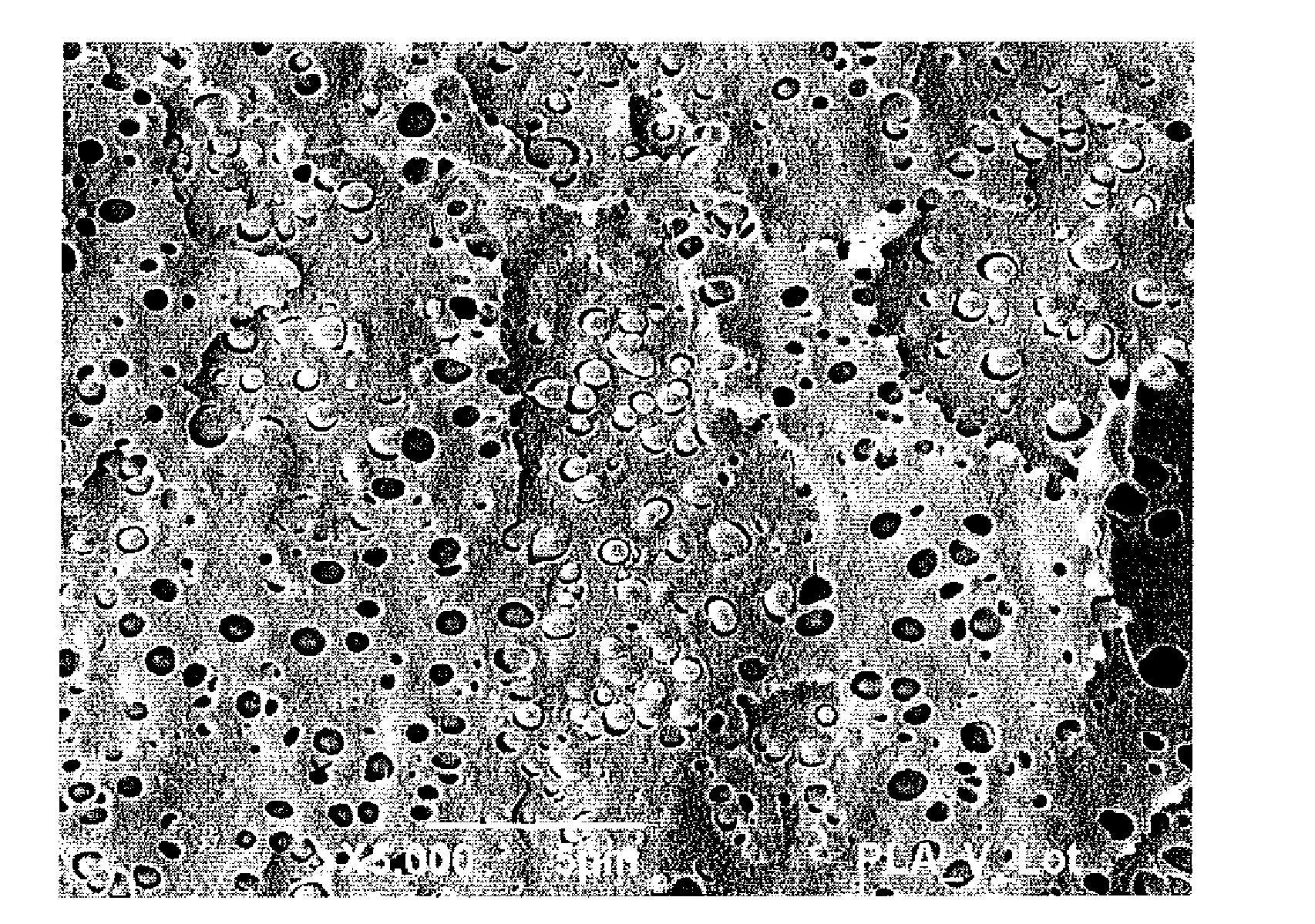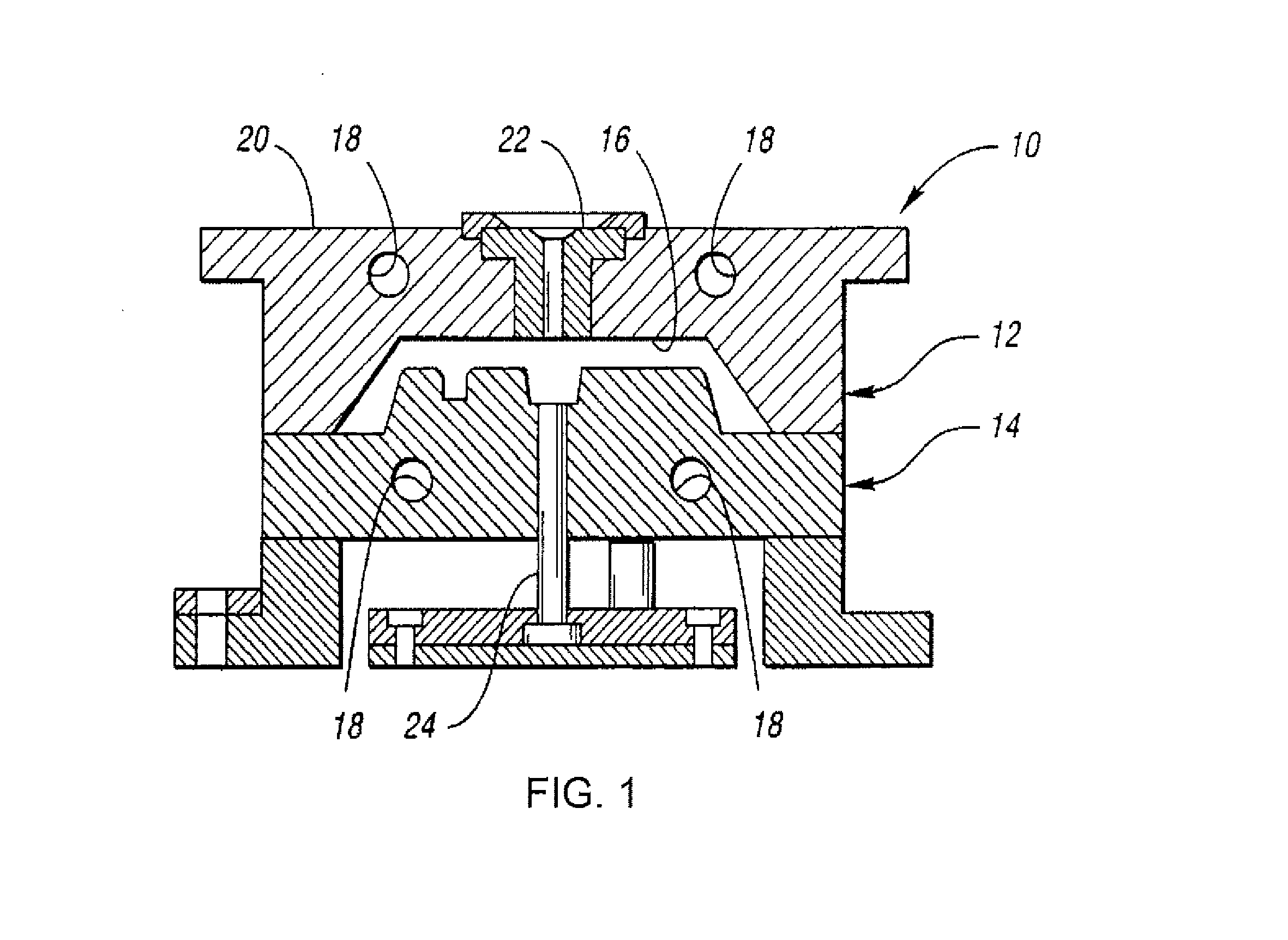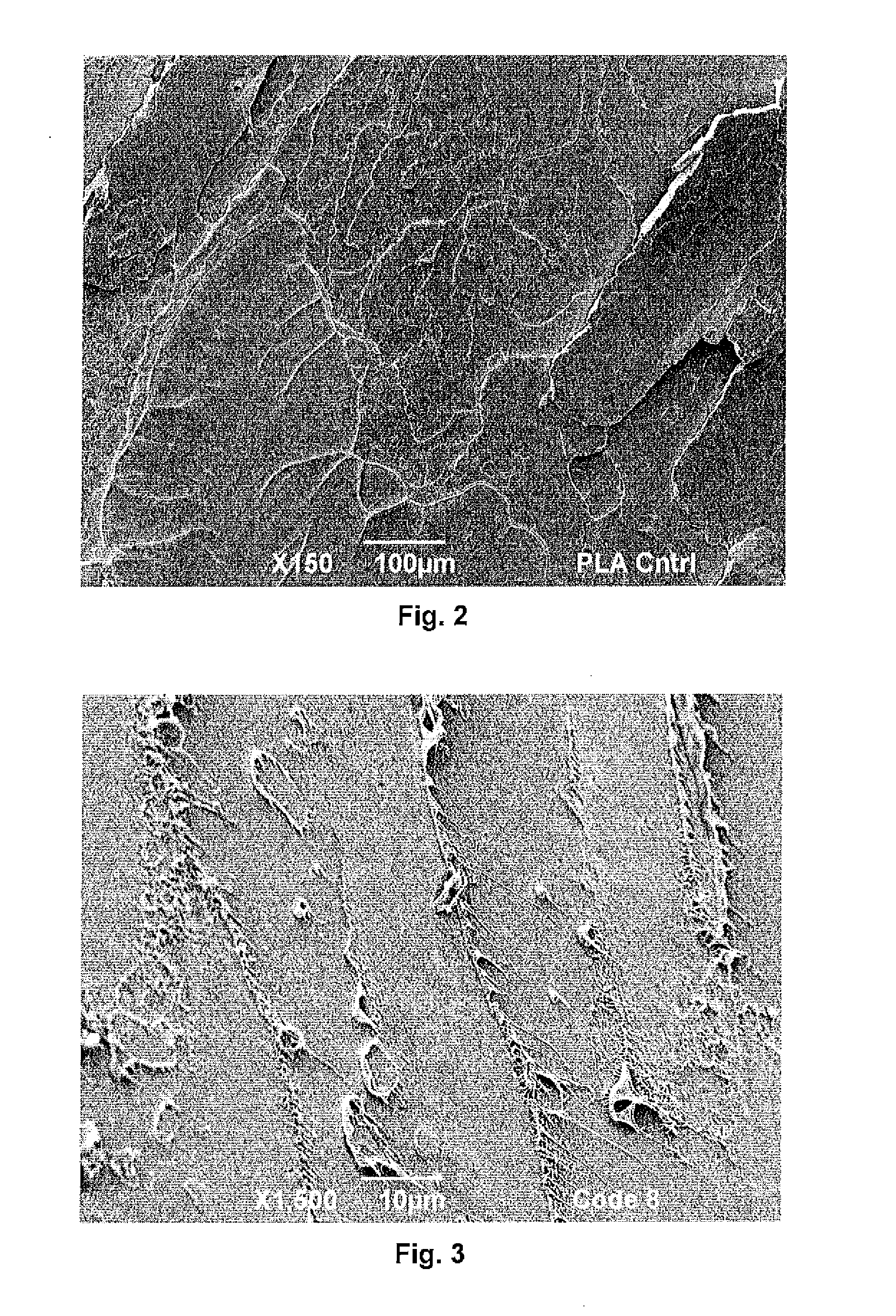Rigid Renewable Polyester Compositions having a High Impact Strength and Tensile Elongation
a renewable polyester and impact strength technology, applied in the field of high impact strength and tensile elongation of rigid renewable polyester compositions, can solve the problems of low ductility/elongation at break, difficult use of renewable polymers in injection molded articles, and often formed molding materials from synthetic polymers
- Summary
- Abstract
- Description
- Claims
- Application Information
AI Technical Summary
Benefits of technology
Problems solved by technology
Method used
Image
Examples
example 1
[0089]Polylactic acid (PLA 6201D having a melt flow rate of 10 g / 10 min at 190° C., Natureworks®) was formed into an injected molded part as a control. The shrinkage from the mold length dimension after 24 hours and 48 hours were 0.2% and 0.2%, respectively. The shrinkage from the mold width dimension after 24 and 48 hours were −0.5% and 0.1%.
example 2
[0090]The ability to form injection molded parts from a blend of 88.7 wt. % polylactic acid (PLA 6201D having a melt flow rate of 10 g / 10 min at 190° C., Natureworks®) 9.9 wt. % of a toughening additive and 1.4% polyepoxide modifier was demonstrated. The toughening additive was VISTAMAXX™ 2120 (ExxonMobil), which is a polyolefin copolymer / elastomer with a melt flow rate of 29 g / 10 min (190° C., 2160 g) and a density of 0.866 g / cm3. The polyepoxide modifier was poly(ethylene-co-methyl acrylate-co-glycidyl methacrylate) (LOTADER® AX8950, Arkema) having a melt flow rate of 70-100 g / 10 min (190° C. / 2160 g), a glycidyl methacrylate content of 7 to 11 wt. %, methyl acrylate content of 13 to 17 wt. %, and ethylene content of 72 to 80 wt. %. The polymers were fed into a co-rotating, twin-screw extruder (ZSK-30, diameter of 30 mm, length of 1328 millimeters) for compounding that was manufactured by Werner and Pfleiderer Corporation of Ramsey, N.J. The extruder possessed 14 zones, numbered co...
example 3
[0092]Parts were injection molded as described in Example 2, except that the blend contained 85.3 wt. % polylactic acid (PLA 6201D, Natureworks®), 9.5 wt. % of toughening additive VISTAMAXX™ 2120 (ExxonMobil), 1.4 wt. % polyepoxide modifier (LOTADER® AX8950, Arkema), and 3.8 wt. % interphase modifier (PLURIOL® WI 285 from BASF). The PLURIOL® WI-285 was added via injector pump into barrel zone #2. The shrinkage from the mold length and width dimensions after 96 hours was -0.4% and 0.3%, respectively.
PUM
| Property | Measurement | Unit |
|---|---|---|
| glass transition temperature | aaaaa | aaaaa |
| glass transition temperature | aaaaa | aaaaa |
| tensile elongation at break | aaaaa | aaaaa |
Abstract
Description
Claims
Application Information
 Login to View More
Login to View More - R&D
- Intellectual Property
- Life Sciences
- Materials
- Tech Scout
- Unparalleled Data Quality
- Higher Quality Content
- 60% Fewer Hallucinations
Browse by: Latest US Patents, China's latest patents, Technical Efficacy Thesaurus, Application Domain, Technology Topic, Popular Technical Reports.
© 2025 PatSnap. All rights reserved.Legal|Privacy policy|Modern Slavery Act Transparency Statement|Sitemap|About US| Contact US: help@patsnap.com



